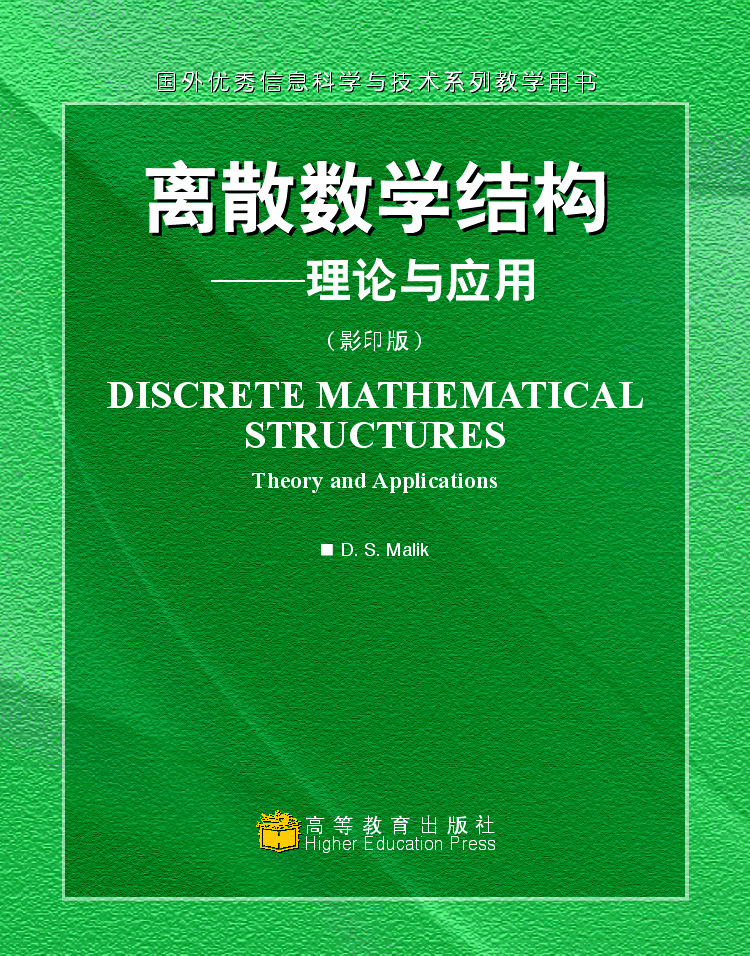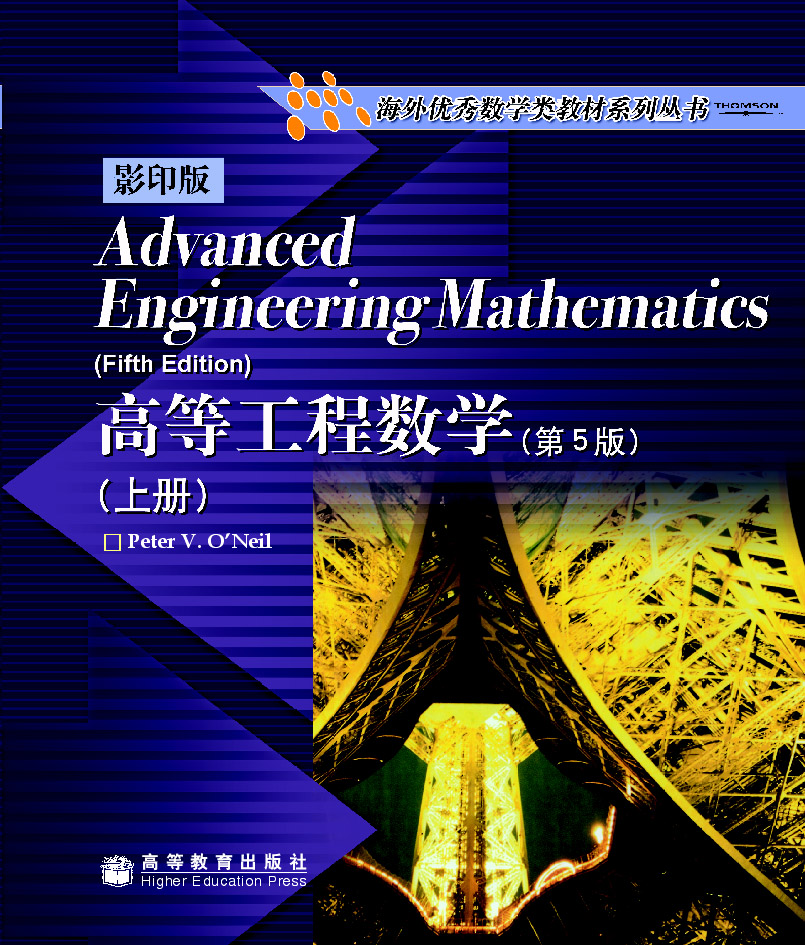- 西北工业大学出版社
- 9787561245811
- 162695
- 2015-09
- TP13
内容简介
李俨、袁冬莉编著的《自动控制原理》介绍:This book presents a comprehensive treatment of the analysis and design of control systems. It consists of eight chapters, including the basic concepts of control systems, mathematical modeling, analysis and design of control systems by time-domain method, root-locus method and frequency-domain method, analysis and synthesis of discrete-time systems, the phase plain analysis and the describing function analysis of nonlinear control systems, and analysis and design of control systems by state-space method. MATLAB codes are given for computer aided plots. Excises are arranged for each chapter.
This book is intended to be used as a text for a first course in control systems. It also can be used as a reference for control system engineers.
This book is intended to be used as a text for a first course in control systems. It also can be used as a reference for control system engineers.
目录
Chapter 1 Introduction of Control Systems
1.1 Introduction
1.2 A Brief History
1.3 Basic Concepts of Automatic Control and Automatic Control Systems
1.4 Control System Composition
1.5 Examples of Control Systems
1.6 Classification of Automatic Control Systems
1.7 General Requirements for Control Systems
1.8 Contents of This Book
Summary
Exercises 1
Chapter 2 Mathematical Models of Control Systems
2.1 Introduction
2.2 Time-Domain Mathematical Models of Control Systems
2.3 Complex Domain Mathematical Models of Control Systems
2.4 Block Diagrams of Control Systems
2.5 Signal-Flow Graphs of Control Systems
2.6 Transfer Functions of Control Systems
Summary
Exercises 2
Chapter 3 Analysis and Design of Linear Systems in Time-Domain
3.1 Introduction
3.2 First-Order Systems
3.3 Second-Order Systems
3.4 Higher Order Systems
3.5 Stability Analysis of Linear Systems
3.6 The Steady-State Error of Linear Systems
3.7 Time-Domain Compensation
Summary
Exercises 3
Chapter 4 Root Locus Method
4.1 The Basic Concept of Root Locus Method
4.2 General Rules for Constructing Root-loci
4.3 Generalized Root Locus
4.4 System Analysis by Root Locus Method
Summary
Exercises 4
Chapter 5 Analysis and Synthesis of Linear Systems in Frequency-Domain
5. 1 Concept of Frequency-Response Characteristics
5.2 Magnitude Versus Phase Frequency Characteristics (Nyquist Plot)
5.3 Log-frequency Characteristics(Bode Diagram)
5.4 Frequency Stability Criterion
5.5 Stability Margin
5.6 Analysis of the System Performance by Open-loop Log-magnitude
Frequency Characteristics
5.7 Closed-loop Frequency Characteristics
5.8 Analysis of System Performance by Closed-loop Frequency Characteristics
5.9 Cascade Compensation on Frequency Domain
Summary
Exercises 5
Chapter 6 Analysis and Design of Linear Discrete Systems
6.1 Discrete Systems
6.2 Signal Sampling and Holding
6.3 The z Transform
6.4 The Mathematical Model of Discrete System
6.5 Stability Analysis
6.6 Steady-State Error
6.7 Dynamic Performance Analysis
6.8 Analog Compensation of Discrete Systems
6.9 Digital Compensation of Discrete Systems
Summary
Exercises 6
Chapter 7 Nonlinear Control Systems Analysis
7.1 Introduction of Nonlinear Control Systems
7.2 Phase plane analysis
7.3 Describing Function Analysis
7.4 Measures to Improve the Performance of Nonlinear Systems
Summary
Exercises 7
Chapter $ Control System Analysis and Design in State Space
8.1 The State Space Description of Control Systems
8.2 Behavior Analysis of Linear Systems
8.3 The Lyapunov Stability of Control Systems
8.4 The Controllability and Observability of the Linear Systems
8.5 Nonsingular Linear Transformation and Canonical Decomposition
of the Linear Systems
8.6 Comprehensive Design of the Linear Time-invariant Control Systems
Summary
Exercises 8
Appendix
Reference
1.1 Introduction
1.2 A Brief History
1.3 Basic Concepts of Automatic Control and Automatic Control Systems
1.4 Control System Composition
1.5 Examples of Control Systems
1.6 Classification of Automatic Control Systems
1.7 General Requirements for Control Systems
1.8 Contents of This Book
Summary
Exercises 1
Chapter 2 Mathematical Models of Control Systems
2.1 Introduction
2.2 Time-Domain Mathematical Models of Control Systems
2.3 Complex Domain Mathematical Models of Control Systems
2.4 Block Diagrams of Control Systems
2.5 Signal-Flow Graphs of Control Systems
2.6 Transfer Functions of Control Systems
Summary
Exercises 2
Chapter 3 Analysis and Design of Linear Systems in Time-Domain
3.1 Introduction
3.2 First-Order Systems
3.3 Second-Order Systems
3.4 Higher Order Systems
3.5 Stability Analysis of Linear Systems
3.6 The Steady-State Error of Linear Systems
3.7 Time-Domain Compensation
Summary
Exercises 3
Chapter 4 Root Locus Method
4.1 The Basic Concept of Root Locus Method
4.2 General Rules for Constructing Root-loci
4.3 Generalized Root Locus
4.4 System Analysis by Root Locus Method
Summary
Exercises 4
Chapter 5 Analysis and Synthesis of Linear Systems in Frequency-Domain
5. 1 Concept of Frequency-Response Characteristics
5.2 Magnitude Versus Phase Frequency Characteristics (Nyquist Plot)
5.3 Log-frequency Characteristics(Bode Diagram)
5.4 Frequency Stability Criterion
5.5 Stability Margin
5.6 Analysis of the System Performance by Open-loop Log-magnitude
Frequency Characteristics
5.7 Closed-loop Frequency Characteristics
5.8 Analysis of System Performance by Closed-loop Frequency Characteristics
5.9 Cascade Compensation on Frequency Domain
Summary
Exercises 5
Chapter 6 Analysis and Design of Linear Discrete Systems
6.1 Discrete Systems
6.2 Signal Sampling and Holding
6.3 The z Transform
6.4 The Mathematical Model of Discrete System
6.5 Stability Analysis
6.6 Steady-State Error
6.7 Dynamic Performance Analysis
6.8 Analog Compensation of Discrete Systems
6.9 Digital Compensation of Discrete Systems
Summary
Exercises 6
Chapter 7 Nonlinear Control Systems Analysis
7.1 Introduction of Nonlinear Control Systems
7.2 Phase plane analysis
7.3 Describing Function Analysis
7.4 Measures to Improve the Performance of Nonlinear Systems
Summary
Exercises 7
Chapter $ Control System Analysis and Design in State Space
8.1 The State Space Description of Control Systems
8.2 Behavior Analysis of Linear Systems
8.3 The Lyapunov Stability of Control Systems
8.4 The Controllability and Observability of the Linear Systems
8.5 Nonsingular Linear Transformation and Canonical Decomposition
of the Linear Systems
8.6 Comprehensive Design of the Linear Time-invariant Control Systems
Summary
Exercises 8
Appendix
Reference





